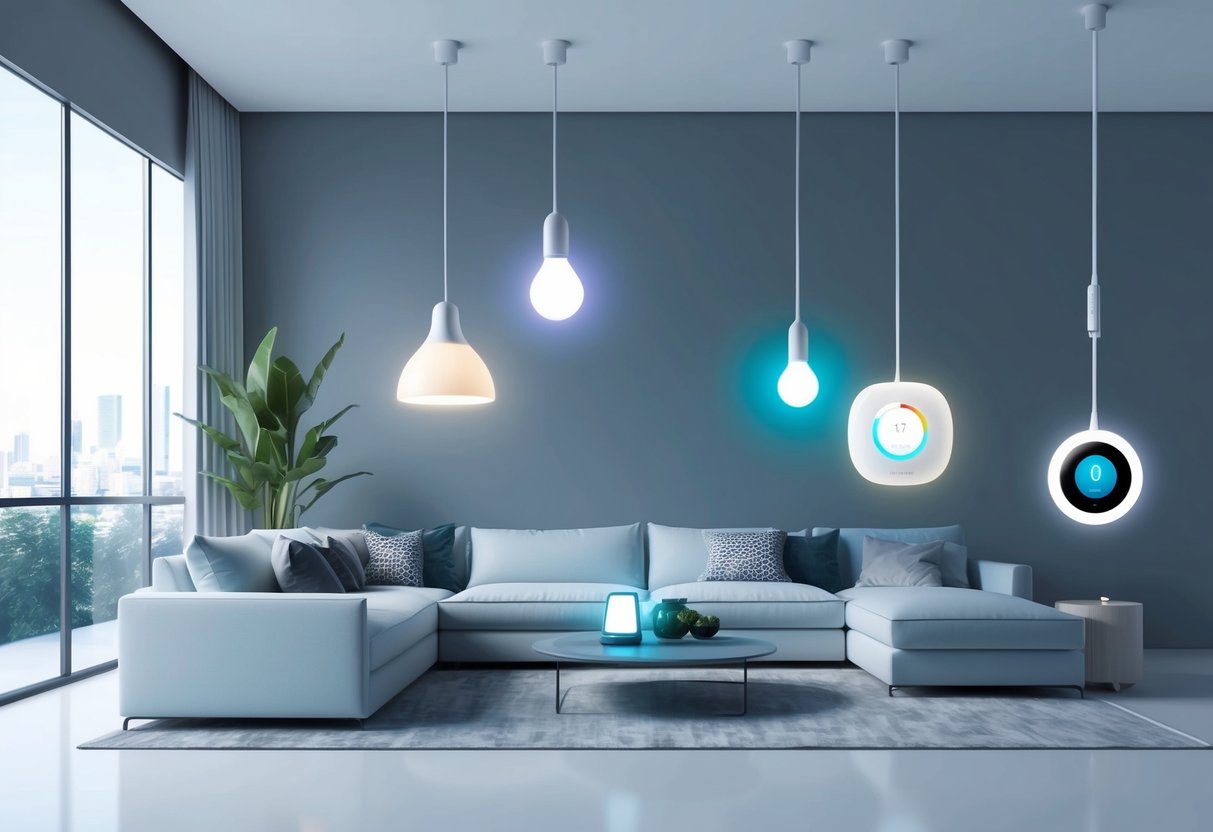
Finding the best smart home products for effortless modern living doesn’t have to mean overspending. Smart plugs, smart bulbs, and affordable smart speakers can transform any home into a more convenient, secure, and energy-efficient space without stretching your budget.
These innovative devices enable automation, voice control, and remote access. They help everyday routines run smoothly and allow users to control lighting, climate, and appliances with ease.
Smart home technology offers options for almost every room in the house. Homeowners can mix and match products from trusted brands to create a customized environment that suits their needs.
From essential upgrades like smart thermostats and wireless cameras to useful additions such as video doorbells, there are solutions that fit both small apartments and large homes. For more details on top-rated devices, visit comprehensive guides like this list of the best smart home devices for 2025 and discover expert-recommended picks for every budget.
Smart Home Foundations
Establishing a smart home goes beyond adding a few devices—it’s about creating a connected environment that balances convenience, security, and energy efficiency. Understanding the concept, how the devices operate, and the role of ecosystems will help users set up an effective foundation for home automation.
What Is a Smart Home?
A smart home uses connected devices and automation systems to manage lighting, climate, security, entertainment, and appliances. These devices can be controlled via a smartphone, tablet, voice assistant, or automated routines.
Key types of smart home devices include smart bulbs, plugs, thermostats, locks, cameras, and hubs. Automation lets these components operate together in response to triggers like time of day, occupancy, or user commands.
Smart homes enable remote access and real-time monitoring. The ability to customize schedules and routines is a core advantage for busy households seeking efficiency.
How Smart Home Devices Work
Most smart home devices connect using Wi-Fi, Zigbee, Z-Wave, Bluetooth, or proprietary protocols. A central hub or bridge, such as the Amazon Echo or Google Nest Hub, can coordinate multiple devices.
Devices are typically managed through companion apps, voice commands, or central dashboards. Users can set rules such as turning off lights when leaving home or adjusting thermostats based on weather data.
Automated routines can connect multiple products for seamless control. For example, a single command like “Goodnight” can lock doors, turn off lights, and arm a security system.
Interoperability across devices is crucial for a streamlined experience.
Choosing the Right Smart Home Ecosystem
Selecting a smart home ecosystem—such as Amazon Alexa, Google Assistant, or Apple HomeKit—determines compatibility and integration across devices. Each platform offers unique strengths with voice control, automation options, and device support.
Most popular ecosystems:
| Ecosystem | Voice Assistant | Device Range | Notable Platforms |
|---|---|---|---|
| Amazon Alexa | Alexa | Extensive | Echo, Ring, Fire TV |
| Google Home | Google Assistant | Broad | Nest Hub, Chromecast |
| Apple HomeKit | Siri | Selective | HomePod, Apple TV |
Device compatibility should be checked before purchase, especially for key categories like smart plugs, thermostats, and cameras. Users with mixed devices may prefer platforms supporting interoperability, such as Google Nest Hub Max or Amazon Echo products.
Voice Assistants and Smart Home Hubs
Leading voice assistants and smart home hubs make it easier than ever to control connected devices, manage routines, and access information using simple voice commands. They offer compatibility with a wide range of products to enable seamless integration in diverse smart home ecosystems.
Amazon Alexa and Amazon Echo
Amazon Alexa is one of the most recognized voice assistants, equipped with comprehensive support for smart home automation. Users with an Amazon Echo device can control lights, thermostats, locks, and more by asking Alexa for actions or status updates.
Alexa skills allow users to expand device functionality, including features such as setting reminders, playing music, and managing shopping lists. Amazon Echo devices also feature multi-room audio and intercom-like Drop In capabilities.
For families, Alexa includes parental controls and kid-friendly voice profiles. Popular smart home brands like Philips Hue, Ring, and Ecobee integrate directly with Alexa.
The Alexa app makes it easy to set routines and automate tasks across many devices in the home. Further details and device recommendations can be found in Amazon’s category for smart voice assistants and hubs.
Google Assistant and Google Home
Google Assistant, available on Google Home smart speakers and displays, allows users to manage compatible devices using voice commands and touch controls. Its deep integration with Google services means users can access calendars, reminders, answers, and real-time traffic updates.
Google Home devices utilize a familiar interface and work with brands like Nest, Philips Hue, and TP-Link. Voice Match enables personalized responses for different household members.
Routines let users group smart home actions, such as dimming lights and adjusting the thermostat, into a single command. Privacy controls and granular settings help users manage data sharing.
Google Assistant’s robust natural language processing ensures accurate responses to varied requests. Explore the latest Google Home devices and top picks for smart home hubs.
Apple HomeKit Integration
Apple HomeKit is a smart home framework built into Apple devices, allowing users to control HomeKit-compatible products using the voice assistant Siri or the Home app. Users benefit from a high level of security and privacy with end-to-end encrypted communication for all HomeKit traffic.
HomeKit supports scenes and automations, letting users combine actions—such as turning on lights at sunset and adjusting shades in the morning. Apple TV, HomePod, and iPad can function as home hubs, providing remote access and automation triggers.
Siri supports a range of voice commands for everyday convenience and also integrates with Apple’s ecosystem, including calendar, reminders, and location-based automations. HomeKit’s compatibility is expanding as more manufacturers adopt support for Matter, promoting interoperability with other platforms.